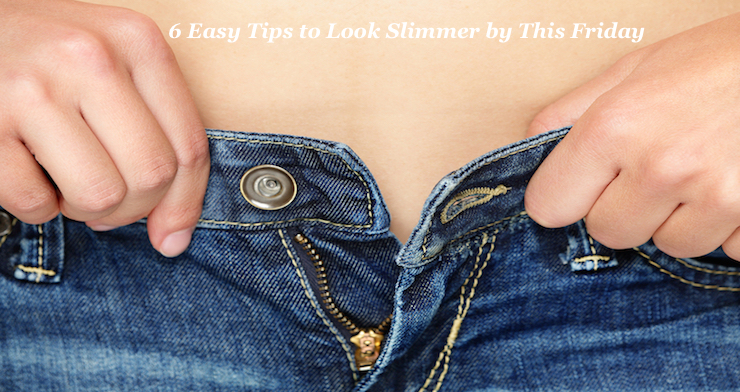Scientists have uncovered the ultimate catch-22: (1) Circulating vitamin D can be associated with fast and easy fat burn; (2) Fat cells can lock up vitamin D, creating a lack of the nutrient in virtually 100 percent of overweight women, so even if they supplement and sun, they can still fall short.
New science reveals how you can break this vicious circle, lose the stubborn weight, regain your energy and achieve optimal health. Two years ago two researchers one from McGill University in Canada, the other from Children’s Hospital Los Angeles set out to do a study to determine if vitamin D could help young adults gain peak bone mass. They recruited 90 women in California between the ages of 16 and 52 and put them through extensive body scans to examine how their vitamin D levels correlated with height, weight, body fat distribution and bone mass. The researches didn’t find what they were looking for – there was no correlation between low circulating vitamin D levels and low bone mass but they did discover a strong, shocking link between low vitamin D and belly fat.
The first surprise was that 60 percent of these women in this very sunny area had vitamin D insufficiency, recalls lead author of the study Richard Kremer, M.D., Ph.D., a professor of medicine at McGill University. Scientists have long known that up to 80 percent of women in northern latitudes can have suboptimal vitamin D levels (below 30 ng/ml), especially in the winter and increasingly as they get older. But research done in the last few years has found that women in southern climates are also often low in the nutrient. And studies reveal that vitamin D insufficiency can be a problem at any age especially for naturally dark-skinned women (whose skin requires more sun to synthesize equivalent amounts of the vitamin) and women who have a high BMI.
The second surprise was how strongly vitamin D levels correlated with fat,”Dr. Kremer continues. “We were using comprehensive imaging instruments, and when we put all the data together, we found a very strong negative correlation between circulating vitamin D and all the parameters of fat-BMI, weight, abdominal fat and subcutaneous fat.” Women with D levels that were low but not necessarily deficient had 40 percent more subcutaneous fat (the jiggly kind) then women who got enough of the vitamin. But the real shocker: Women with insufficient vitamin D levels had 80 percent more abdominal fat then their high-D peers.
How D dials down fat
Although vitamin D (as synthesized by the skin from sunlight and or taken as a supplement) is indeed a nutrient, once in the bloodstream, it’s activated by the kidneys into a hormone called 1.25 dihydroxyvitamin D (1,25-D). “If you don’t have enough circulating vitamin D, the level of this hormone could be lower,” observes Dr. Kremer. “And this is critical because 1,25-D is a hormone that actually controls the growth of cells not just in fat but also in cancer. So if you don’t have enough, you sort of lift off the brake a little on this growth, then the cells can go wild.”
If 1,25-D tells fat cells to get smaller, the expectation would be that folks with high levels of the stuff would lose weight more easily. And that’s exactly what University of Minnesota researchers found: “What’s interesting about our weight loss study is that we didn’t recruit people to be insufficient in vitamin D we recruited people who were overweight, and they happened, on average, to have inadequate D levels,” explains the study’s lead author Shalamar Sibley, M.D., an assistant professor of medicine at the university, Dr. Sibley and her team measured the baseline levels of both the precursor form of vitamin D, or 25(OH)D, and the active form (1,25-D) in 38 people (20 women) before putting them each on a diet that cut 750 calories a day from what they were calculated to need. Then they monitored the subjects for 11 weeks, measuring their fat distribution with bone densitometry (DXA) scans.
“It was found that, for whatever reason, people’s baseline vitamin D levels did predict fat loss-abdominal fat loss in particular,” says Dr. Sibley. For every 1 ng/ml of the precursor form of vitamin D, women lost about 1/2 pound more weight. That might not sound like a lot until you consider that most American women have vitamin D levels ranging from 12 ng/ml to 32 ng/ml. If you’re at the low-end, you would lose almost a pound a week less than if you are at the high-end.
How fat dials down D
While the above studies suggest how taking vitamin D could help you lose, that’s only half the story: Part two involves the way in which fat itself dilutes and disperses vitamin D stores in the body. “Fat cells are really happy to take on vitamin D,” explains Michael F. Holick, M.D., Ph.D., a professor of medicine, physiology and biophysics at the Boston University School of Medicine and author of the vitamin D Solution. “If you’ve got a lot of fat, the amount of vitamin D you’re taking in may be the same as a thinner person, but it’s diluted substantially, so you are going to have less vitamin D in your bloodstream.”That’s because the nutrient is stored in a larger number of fat cells, and those cells are bigger. “The larger cells have a higher fat content,” says Dr. Holick. “Even if you burn them, you’re not mobilizing much vitamin D at all.”
Indeed, study after study shows that the higher your percentage of body fat, the less circulating vitamin D you’re likely to have, making it more difficult to lose the fat-it’s a classic vicious cycle. Most cruelly, spending time in the sun helps heavy women much less than it does their skinny counterparts. In one study, 73 percent of women with the lowest levels of body fat reached sufficient D levels during the summer, while only 31 percent of those with the most body fat did the some. “When we exposed overweight people to simulated sunlight in a tanning bed, they raised their blood levels of vitamin D by about 45 percent compared with a normal-weight person,” sys Dr. Holick of a study he led. “The synthesis is the same, but the level that reaches the bloodstream is different.”
“Right now the major study in the works is looking at the connection between vitamin D and fat metabolism,” says Dr. Holick. “Everybody has assumed that vitamin D is stored in fat, so the fatter you are, the lower your D levels because the vitamin is stored.
How much do you need?
Recent research suggests that for every 100 IU of vitamin D a woman takes, she can expect her circulating levels of D to rise by 1 ng/ml. Combined with the results that the University of Minnesota researches found, this suggests that an average can lose a pound a week for 2,200 IU of vitamin D she takes daily. That’s in line with what Dr. Holick recommends: “Women should ideally be on a minimum of 2,000 units a day-and that can be on top of their calcium with vitamin D and the D they’re getting from their diet and/or sensible sun exposure,” he says. “If you’re overweight, It is recommended two to three-times that much, up to a maximum of 10,000 IU Daily.”
But isn’t that too much?
“One of the reasons people don’t take enough vitamin D is because 1,000 units seems like a lot. But it’s really only 25 micrograms,” observes Dr. Cannell. “If vitamin D were discussed in terms of its micrograms, people would realize that the 400 IU the government recommends is only 10 micrograms-basically a meaningless amount.”
It worked for Patty! “She feels 25 years younger”
What does it mean how could I be malnourished? wondered Patty as she sat in her doctor’s exam room. Eating too much not too little, had driven Patty’s weight gain over the past 20 years. It’s what had led to pain so intense that she’d sought X-rays to make sure she didn’t have any broken bones in her feet. I can’t be starving for vitamins, she thought. I get plenty to eat – that’s the problem!
Yet when the test results rolled in, Patty learned she was deficient in vitamin D, and likely had been for several years.
She quickly upgraded her diet and supplements with 2,000 IU of D3 daily. “I noticed a difference right away,” says Patty, she trimmed off 10 pounds a month.
After losing 95 pounds , Patty, is finally in the driver’s seat with her health. “I haven’t had a single arthritis symptom in two years. “Plus, she confidently models new clothes for her husband, who lost 35 pounds himself. Patty shares, “I feel years younger!”
-
Valuable
-
Helpful
-
Taste
-
Preparation


